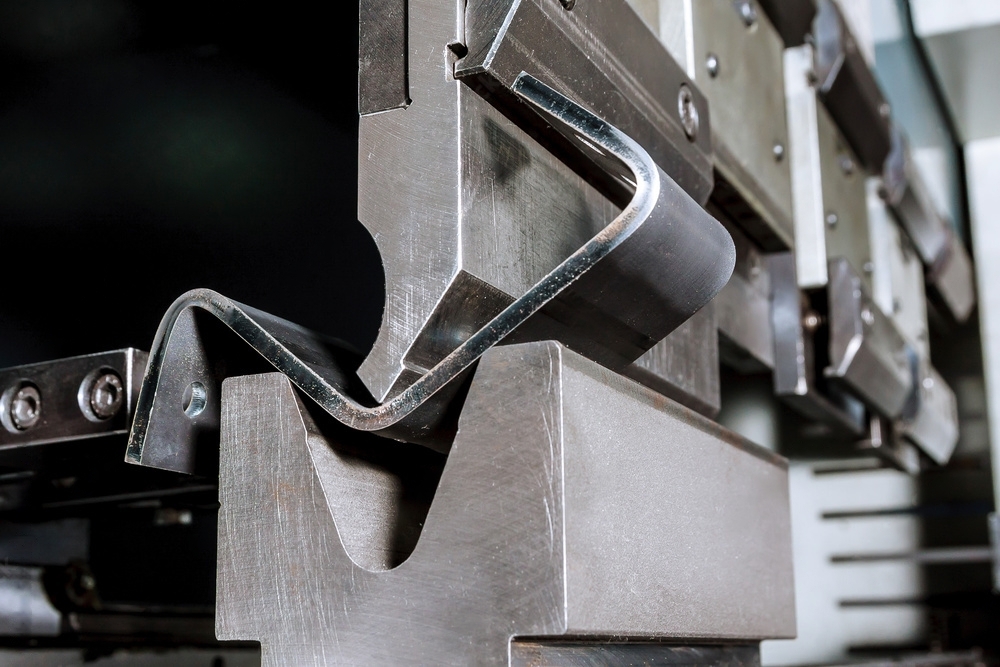Metal forming is a fascinating and intricate process that lies at the heart of various industries, shaping raw materials into diverse products. This article delves into the fundamentals of metal forming, unraveling the techniques, applications, and significance of custom metal forming in the world of manufacturing.
Understanding Metal Forming
Defining Metal Forming
Metal forming is a manufacturing process that involves shaping metal into desired forms, dimensions, and geometries. This transformation can occur through a variety of techniques, each tailored to specific applications and materials. Metal forming is a crucial aspect of the manufacturing landscape, contributing to the creation of a wide array of products we encounter in our daily lives.
The Role of Deformation
At its core, metal forming relies on the deformation of metal workpieces. This deformation can occur through mechanical forces, heat, or a combination of both. The goal is to alter the shape of the material while maintaining its structural integrity, creating products with precision and consistency.
Techniques of Metal Forming
Rolling
Rolling is a fundamental metal forming technique where metal is passed through a pair of rolls. This process reduces the thickness of the metal, changes its cross-sectional shape, or imparts a uniform thickness. It’s commonly used in the production of sheets, plates, and structural shapes.
Forging
Forging involves shaping metal through the application of compressive forces. The metal workpiece is hammered, pressed, or squeezed to achieve the desired form. This process enhances the material’s strength and is often employed in the production of high-strength components.
Stamping
Stamping, also known as pressing, uses dies and punches to cut or form metal into specific shapes. This process is widely used for creating intricate designs, patterns, and precise shapes in sheet metal. Stamping finds applications in the production of automotive components, appliances, and consumer electronics.
Extrusion
Extrusion involves forcing metal through a die to create a specific cross-sectional shape. This continuous process is commonly used for producing long objects with a consistent profile, such as pipes, rods, and various structural components.
Drawing
Drawing is a metal forming technique that involves pulling a metal workpiece through a die to reduce its diameter. This process is commonly used to produce wires, tubes, and other components with a uniform cross-sectional area.
Custom Metal Forming: Tailoring to Precision
The Significance of Customization
Custom metal forming takes the principles of metal forming a step further by tailoring the process to meet specific design requirements. This customization allows manufacturers to produce components with unique shapes, sizes, and functionalities, catering to the diverse needs of various industries.
Flexibility in Design
Custom metal forming provides unparalleled flexibility in design. Manufacturers can create intricate and complex shapes that might be challenging or impossible to achieve with standard metal forming techniques. This flexibility is particularly valuable in industries where innovation and unique designs are paramount.
Precision Engineering
The custom metal forming process demands precision engineering. Manufacturers utilize advanced technologies, such as computer numerical control (CNC) machining, to achieve exact specifications. This precision ensures that each custom-formed metal component meets the tight tolerances required for its intended application.
Versatility Across Industries
Custom metal forming finds applications across a wide range of industries, from aerospace and automotive to electronics and construction. The ability to tailor metal forming processes to specific project requirements makes custom metal forming an indispensable tool for creating components used in diverse sectors.
Applications of Metal Forming
Automotive Industry
Metal forming plays a central role in the automotive industry, where components like body panels, frames, and engine parts are formed using techniques like stamping and forging. The precision and strength achieved through metal forming contribute to the safety and performance of vehicles.
Aerospace Sector
In aerospace manufacturing, custom metal forming is employed to create lightweight yet durable components. Techniques like extrusion and forging are used to produce aircraft structural parts, engine components, and other critical elements.
Construction and Architecture
Metal forming is widely used in the construction and architectural industries. Custom-formed metal components are employed in structures, facades, and interior elements, providing both aesthetic appeal and structural integrity.
Electronics and Consumer Goods
The electronics and consumer goods industries rely on metal forming for the production of precision components. Stamping and drawing are commonly used to create intricate parts for electronic devices, appliances, and various consumer products.
Challenges and Innovations in Metal Forming
Material Selection and Properties
Choosing the right material for metal forming processes is crucial. The properties of the material, such as its strength, ductility, and formability, influence the success of the forming operation. Manufacturers continually explore new alloys and materials to enhance the capabilities of metal forming.
Tooling and Equipment Wear
The constant application of force and heat in metal forming processes can lead to wear and tear on tools and equipment. Innovations in tooling materials, coatings, and cooling systems aim to extend the lifespan of tools and enhance the efficiency of metal-forming operations.
Simulation and Modeling
Advancements in simulation and modeling technologies allow manufacturers to predict and optimize the outcomes of metal forming processes. Computer-aided design (CAD) and finite element analysis (FEA) enable precise virtual simulations, reducing the need for trial and error in the manufacturing process.
Additive Manufacturing Integration
The integration of additive manufacturing, commonly known as 3D printing, with traditional metal forming techniques is an area of ongoing innovation. This hybrid approach allows for the creation of intricate structures that may be challenging to achieve solely through conventional metal forming.
Conclusion
Metal forming is a versatile and essential process that shapes the modern world. From the production of intricate components for electronics to the creation of robust structural elements in aerospace, metal forming is at the core of manufacturing innovation. The advent of custom metal forming further expands the possibilities, offering tailored solutions to meet the diverse needs of industries. As technology continues to advance, metal forming will undoubtedly play an integral role in shaping the future of manufacturing.

 2018 ·
2018 ·
Leave a Reply